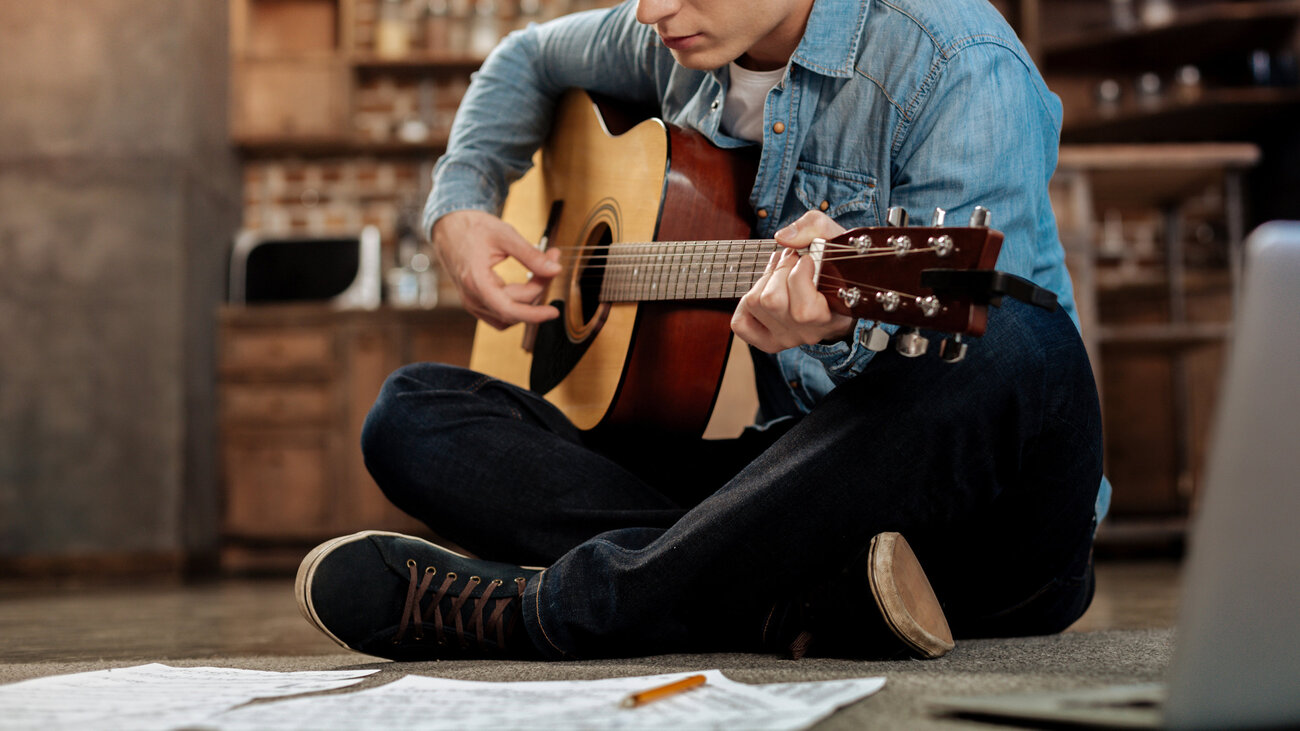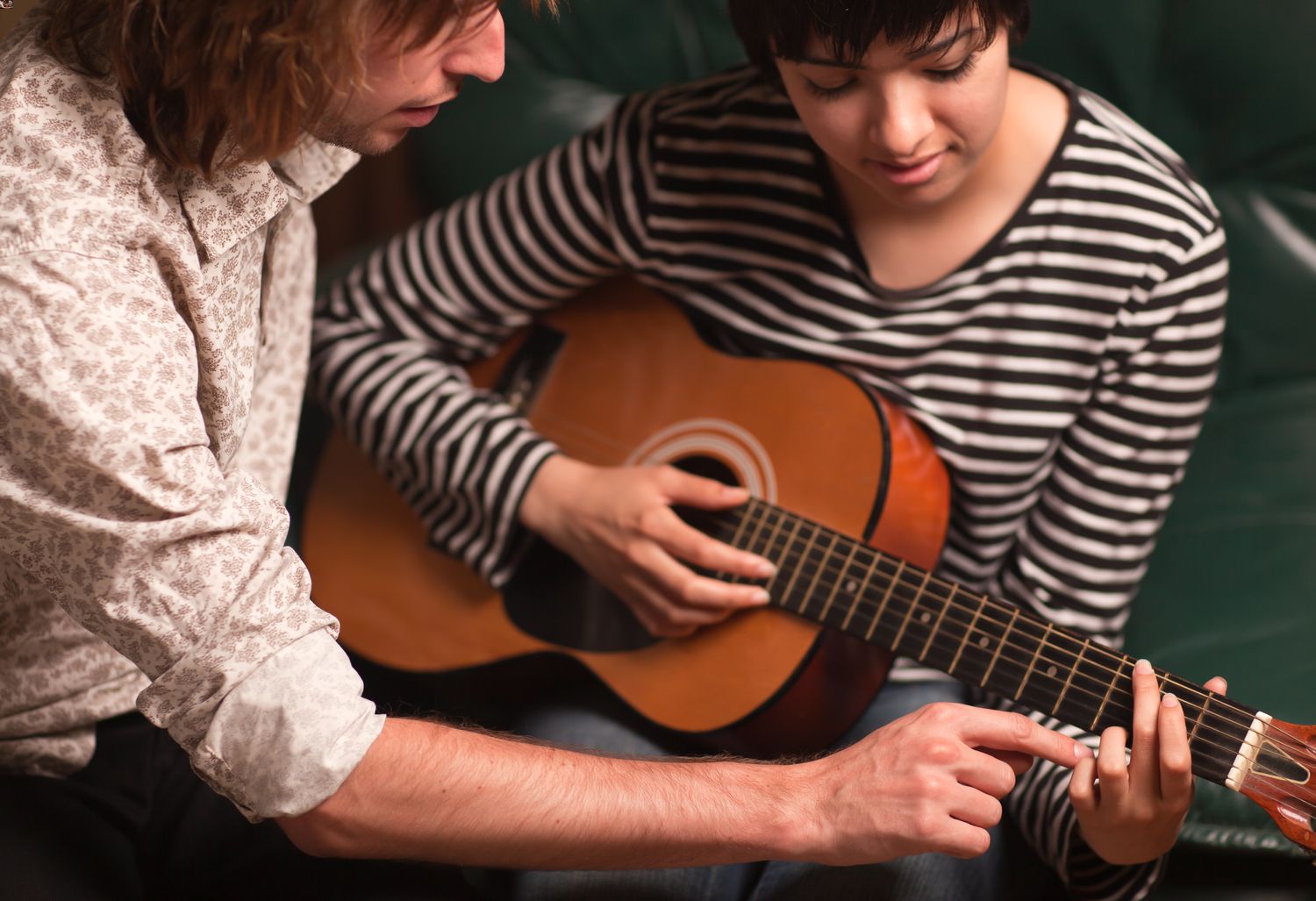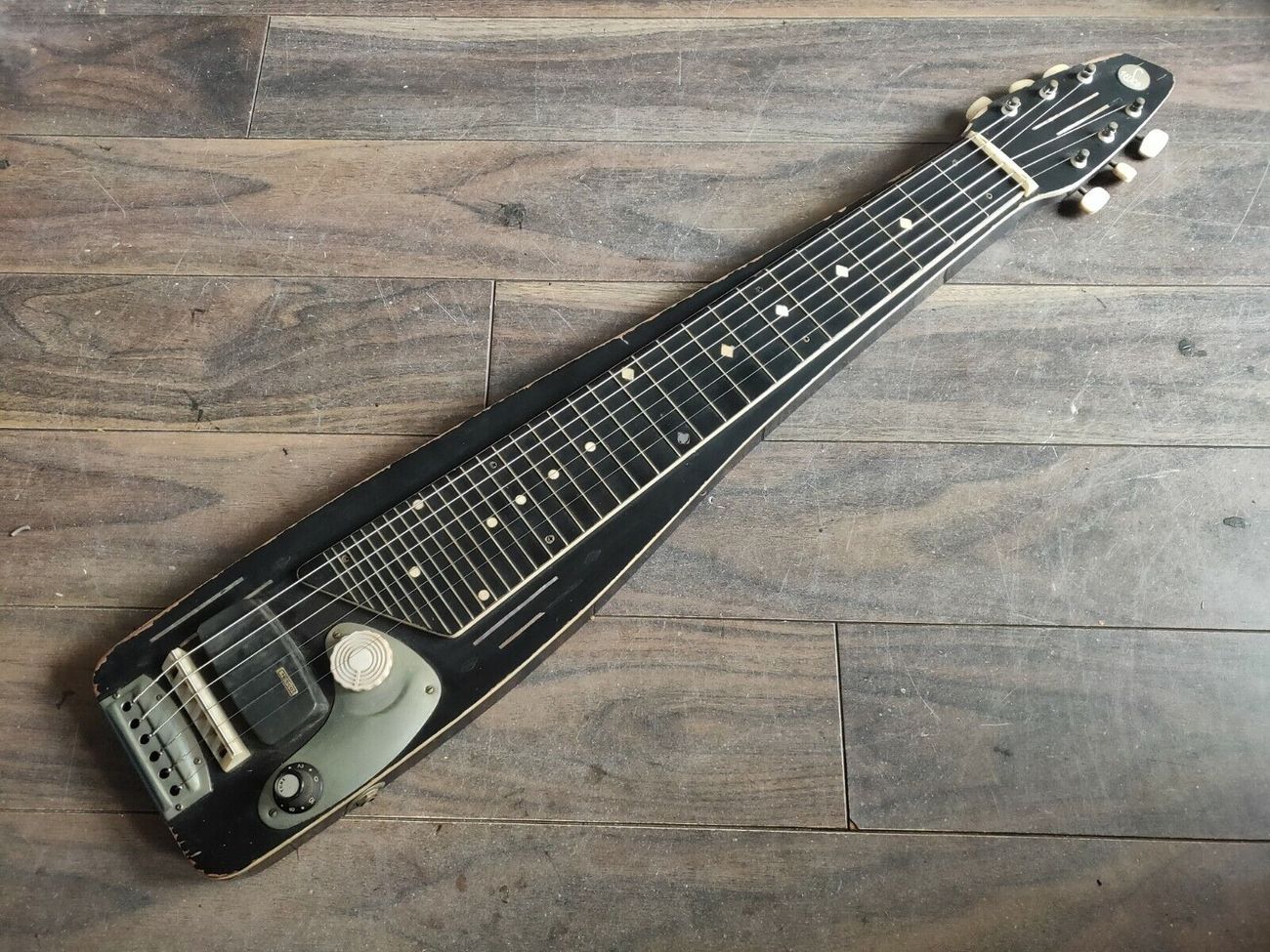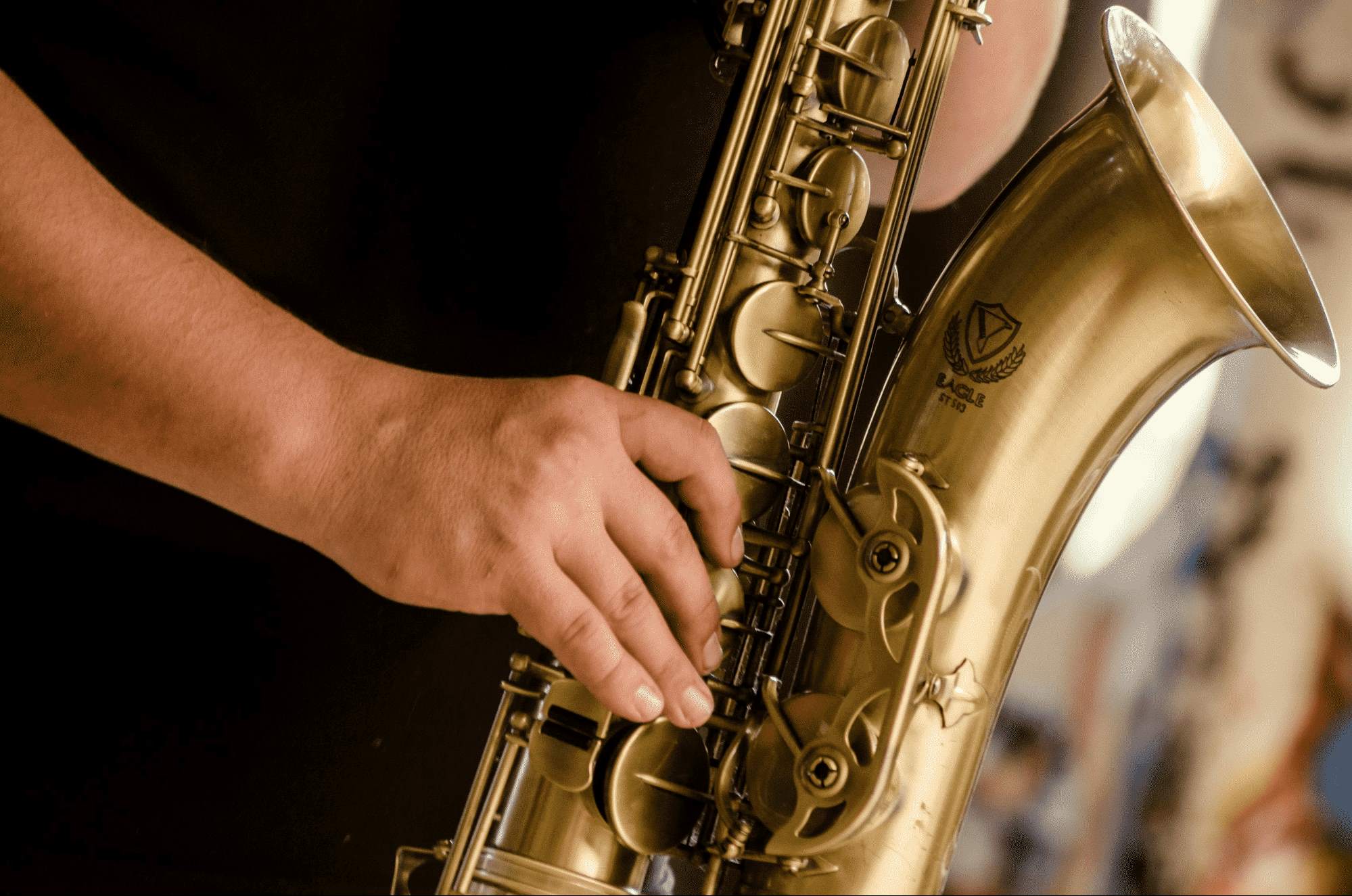

Jazz
How To Play Gypsy Jazz Guitar
Modified: January 22, 2024
Learn how to play Gypsy Jazz guitar with our comprehensive guide. Explore different jazz techniques and improve your skills in this captivating genre.
(Many of the links in this article redirect to a specific reviewed product. Your purchase of these products through affiliate links helps to generate commission for AudioLover.com, at no extra cost. Learn more)
Table of Contents
- Introduction
- What is Gypsy Jazz Guitar?
- Essential Techniques for Gypsy Jazz Guitar
- Understanding Gypsy Jazz Chords
- Learning Gypsy Jazz Guitar Licks and Phrases
- Improvising in Gypsy Jazz Style
- The Role of Rhythm Guitar in Gypsy Jazz
- Developing Speed and Dexterity in Gypsy Jazz Playing
- Tips for Playing with a Gypsy Jazz Ensemble
- Recommended Gypsy Jazz Guitarists and Recordings
- Conclusion
Introduction
Gypsy jazz guitar is a highly distinctive style of music that originated in France in the 1930s. It is known for its infectious rhythms, intricate melodies, and the unique guitar techniques that define its sound. Popularized by legendary guitarist Django Reinhardt, Gypsy jazz incorporates elements of swing, traditional Romani music, and European folk music to create a style that is both virtuosic and emotionally charged.
Playing Gypsy jazz guitar requires a deep understanding of the genre’s history, techniques, and chord progressions. In this article, we will explore the essential techniques and concepts that will help you master the art of Gypsy jazz guitar.
Whether you are a beginner guitarist looking to explore new musical styles or an experienced player wanting to expand your repertoire, learning Gypsy jazz guitar can be a rewarding and fulfilling journey. By delving into the unique rhythmic patterns, exotic chords, and dynamic improvisation techniques of Gypsy jazz, you will not only develop your skills as a guitarist but also gain a deeper appreciation for the rich heritage of this genre.
This article will guide you through the various facets of Gypsy jazz guitar playing, from mastering essential techniques such as gypsy picking and chord voicings, to learning how to improvise in the style. Additionally, we will discuss the role of rhythm guitar in Gypsy jazz ensembles and provide tips on playing with a group. Finally, we’ll recommend some influential Gypsy jazz guitarists and recordings to inspire your musical journey.
So, grab your guitar, get ready to dive into the magical world of Gypsy jazz, and let’s start exploring the captivating sounds of this incredible genre.
What is Gypsy Jazz Guitar?
Gypsy jazz guitar, also known as “jazz manouche” or “jazz gitan,” is a style of music that originated in the 1930s in France. It was popularized by the legendary guitarist Django Reinhardt and his Quintette du Hot Club de France. Gypsy jazz guitar is characterized by its energetic and swinging rhythms, intricate melodies, and the use of specific guitar techniques that give it a unique sound.
This style of music draws its roots from a combination of influences. Django Reinhardt, a Belgian-born Romani guitarist, incorporated elements of traditional Romani music, swing, and European folk music into his playing. The result was a vibrant and dynamic genre that stands out from other forms of jazz.
One of the defining features of Gypsy jazz guitar is its rhythmic style. It typically features a straight-ahead, driving rhythm created by the rhythm guitar and double bass, often referred to as the “la pompe” or “the pump.” This driving rhythm sets the foundation for the lively and infectious melodies played by the lead guitar.
The guitar techniques used in Gypsy jazz are crucial to achieving its distinctive sound. One prominent technique is “gypsy picking,” also known as “rest stroke picking.” This involves using the index and middle fingers to pluck the strings, with a quick and precise motion that produces a crisp and percussive sound. Gypsy jazz guitarists are also known for their lightning-fast arpeggios and effortlessly fluid legato playing.
In terms of harmonic structure, Gypsy jazz draws heavily from the traditional jazz repertoire, with an emphasis on the use of extended chords and chromaticism. The rhythm guitar typically plays the chords in four-note voicings, creating rich and colorful harmonic textures that support the melody and improvisation.
Gypsy jazz guitar has a timeless quality that continues to captivate audiences around the world. Its combination of soulful melodies, intricate guitar work, and infectious rhythms make it a unique and exhilarating genre to explore. Whether you are a jazz enthusiast or looking to expand your musical horizons, learning Gypsy jazz guitar will open up a world of creativity and musical expression.
Essential Techniques for Gypsy Jazz Guitar
To truly capture the essence of Gypsy jazz guitar, there are several core techniques that you need to master. These techniques will help you achieve the distinct sound and style that defines this genre. Let’s explore some of the essential techniques for Gypsy jazz guitar:
- Gypsy Picking: Also known as “rest stroke picking,” this technique involves using the index and middle fingers to pluck the strings with a quick and precise motion. The fingers come to rest on the next string, resulting in a crisp and percussive sound. Gypsy picking is essential for achieving that distinctive attack and articulation in Gypsy jazz guitar playing.
- Arpeggios: Gypsy jazz guitarists often use arpeggios extensively in their improvisations. Practicing arpeggios in different positions and across various chord progressions will not only improve your technical proficiency but also give you the vocabulary to create melodic lines that fit the harmonic structure of Gypsy jazz.
- Chord Voicings: Gypsy jazz relies heavily on specific chord voicings. Learning and mastering the commonly used chord shapes, such as the “Django-style” Django Reinhardt chords and the “3-note major” and “diminished” shapes, will provide a solid foundation for your rhythm playing in Gypsy jazz.
- Double Stops: Double stops, playing two notes simultaneously on adjacent strings, are another characteristic element of Gypsy jazz guitar. Incorporating double stops into your playing adds depth and richness to your melodic lines, giving them a distinct Gypsy jazz flavor.
- Diminished Runs: Diminished runs are a hallmark of Gypsy jazz guitar solos. Practicing and incorporating diminished scale patterns and arpeggios into your improvisations will allow you to navigate the chord changes and add that chromatic, bebop-inspired flair to your solos.
- Syncopated Rhythms: Gypsy jazz guitar is known for its infectious and energetic rhythms. Learning syncopated strumming patterns and rhythmic variations will help you create the driving swing feel that is essential to Gypsy jazz.
- Dynamic Nuances: Gypsy jazz music is rich in dynamic contrasts. Practice adding subtle variations in volume, intensity, and articulation to your playing to bring out the emotional depth and expressiveness of the music.
Mastering these techniques will take time and dedication. Remember to start slowly and gradually build up speed and accuracy. With practice and patience, you will develop the skills necessary to excel in Gypsy jazz guitar playing. Embrace the challenges and enjoy the journey of learning this unique and captivating style.
Understanding Gypsy Jazz Chords
Gypsy jazz is known for its rich and colorful chord progressions. Understanding and mastering the unique chord voicings used in this style is essential for capturing its authentic sound. Let’s dive into the world of Gypsy jazz chords and explore their characteristics and applications.
One of the defining features of Gypsy jazz chords is their emphasis on four-note voicings, also known as “Django-style” chords. These chords typically consist of a root, a third, a fifth, and a sixth or seventh. The use of these specific voicings creates a warm and distinct sound that is synonymous with Gypsy jazz.
Gypsy jazz chords often incorporate extended chords and chromatic alterations. The dominant seventh chords are prevalent, with added tension notes such as the ninth, eleventh, and thirteenth. These extensions give the chords a sense of tension and resolution, adding depth and complexity to the harmony.
The diminished chord is another important element in Gypsy jazz. It is often used as a passing chord or as a substitute for dominant chords, creating interesting harmonic movement and adding a touch of tension to the progressions.
When it comes to chord progressions, Gypsy jazz commonly employs the “rhythm changes” or “I Got Rhythm” progression. This chord progression, based on the George Gershwin standard, is a staple in the genre. It typically follows a I-VI-II-V pattern, with variations and extensions added to create melodic interest.
Another characteristic aspect of Gypsy jazz chord progressions is the extensive use of secondary dominants. These chords serve as a way to create tension and lead the listener to the next chord. Understanding how to identify and navigate secondary dominants is crucial for improvisation and comping in Gypsy jazz.
It’s important to note that Gypsy jazz guitarists often play chords with a percussive, rhythmic style known as “la pompe” or “the pump.” This technique involves strumming the chords on the off-beats while muting the strings in between to create a driving and syncopated rhythm.
To master Gypsy jazz chords, start by learning the basic shapes and voicings commonly used in the genre. Practice playing them in different positions and progressions, gradually expanding your chord vocabulary. Analyze recordings of Gypsy jazz standards and study how the chords are voiced and how they function in the context of the song.
Lastly, don’t be afraid to experiment with different chord substitutions and variations to add your own creative touch to Gypsy jazz progressions. Remember that understanding the theory and structure behind the chords will provide you with the foundation to explore and express your musical ideas within the Gypsy jazz genre.
Learning Gypsy Jazz Guitar Licks and Phrases
One of the most exciting aspects of playing Gypsy jazz guitar is learning and incorporating the unique licks and phrases that define the style. These melodic lines are not only a source of inspiration but also a way to internalize the language of Gypsy jazz and develop your improvisational skills. Let’s explore some practical tips for learning Gypsy jazz guitar licks and phrases.
1. Transcribe Gypsy Jazz Solos: Start by transcribing solos from iconic Gypsy jazz guitarists like Django Reinhardt, Stochelo Rosenberg, and Bireli Lagrene. Transcribing allows you to analyze and internalize their unique melodic ideas, phrasing, and rhythmic concepts. It’s a great way to build your vocabulary of Gypsy jazz licks.
2. Explore Gypsy Jazz Etudes: There are numerous etudes and study materials available that specifically focus on Gypsy jazz guitar. These exercises help you develop technical skills while incorporating melodic ideas commonly found in the style. Gradually increase the difficulty level of the etudes to challenge yourself and expand your playing abilities.
3. Break Down Licks and Phrases: Once you’ve transcribed or learned a Gypsy jazz lick, take the time to analyze and break it down. Understand the underlying chord progression and how the lick fits into it. Pay attention to the rhythmic patterns and articulation used. By dissecting the lick, you’ll gain a deeper understanding of the musical elements that make it distinctive.
4. Practice Licks in Different Keys and Positions: Once you have learned a Gypsy jazz lick, practice it in different keys and positions on the fretboard. This will help you develop a broader understanding of how the lick can be applied across various chord progressions. It will also improve your fingerboard knowledge and dexterity.
5. Combine Licks and Create Variations: Experiment by combining different Gypsy jazz licks and phrases to create your own musical ideas. This will allow you to personalize your playing and develop your unique voice within the Gypsy jazz style. Explore variations of the original licks by altering the rhythms, adding chromatic passing notes, or applying different techniques.
6. Play Along with Backing Tracks: Utilize Gypsy jazz backing tracks to practice your licks and phrases in a musical context. Playing along with a backing track will improve your sense of timing and help you develop a strong connection between your melodic ideas and the underlying harmony.
Remember, the goal is not to simply mimic other players, but to internalize their language and use it as a springboard for your own creativity. As you learn Gypsy jazz licks and phrases, strive for a balance between emulation and innovation, allowing yourself the flexibility to experiment and add your own personal touch to the music.
Improvising in Gypsy Jazz Style
Improvisation is at the core of Gypsy jazz guitar playing. It is the art of spontaneously creating melodic lines and solos within the harmonic structure of a song. Improvising in the Gypsy jazz style requires a solid foundation in chord voicings, scales, and licks, along with a strong sense of rhythm and a touch of creativity. Here are some tips to help you navigate the world of improvisation in Gypsy jazz:
1. Learn the Harmonic Progressions: Gypsy jazz relies on certain standard harmonic progressions, such as the “rhythm changes” or “I Got Rhythm” progression. By familiarizing yourself with these progressions, you’ll gain a better understanding of where to target your improvisation and how to navigate the chord changes.
2. Internalize the Arpeggios: Arpeggios are crucial in Gypsy jazz improvisation. Practice arpeggios in different positions and inversions across the fretboard. Develop the ability to target chord tones as the chords change, creating melodic lines that harmonically fit the progression.
3. Explore the Gypsy Jazz Scales: In addition to arpeggios, there are specific scales that are commonly used in Gypsy jazz. The most important scales include the major, harmonic minor, and diminished scales. Familiarize yourself with these scales and practice playing them in different patterns and positions.
4. Incorporate Gypsy Jazz Licks: Learning and incorporating Gypsy jazz licks into your improvisation is a great way to capture the authentic sound of the genre. Start by transcribing solos from influential Gypsy jazz guitarists and extract licks that resonate with you. Practice playing them in different keys and experiment with variations and embellishments.
5. Use Chromaticism and Passing Tones: Gypsy jazz is known for its chromaticism and the use of passing tones. Experiment with incorporating chromatic notes between scale tones or as approach notes to add tension and color to your improvisation. Remember to resolve back to consonant notes to maintain a sense of resolution.
6. Develop a Strong Rhythmic Sense: Gypsy jazz relies heavily on the rhythm and swing feel. Work on developing your rhythmic vocabulary by practicing with a metronome, playing along with Gypsy jazz recordings, and immersing yourself in the genre’s rhythmic nuances. This will enable you to create engaging and infectious solos.
7. Listen and Analyze Gypsy Jazz Solos: Take the time to listen to recordings of influential Gypsy jazz guitarists and analyze their solos. Study their phrasing, dynamics, use of space, and rhythmic ideas. Incorporate elements that resonate with you into your own playing while striving to develop your unique voice.
Remember, improvisation is a skill that develops over time and with practice. Be patient and embrace the journey of exploring and expanding your improvisational abilities in the Gypsy jazz style. With dedication and perseverance, you will gain the confidence needed to effortlessly create captivating solos within the rich and vibrant world of Gypsy jazz.
The Role of Rhythm Guitar in Gypsy Jazz
In Gypsy jazz, rhythm guitar plays a vital role in establishing the infectious and energetic pulse that defines the genre. The rhythmic accompaniment, often referred to as “la pompe” or “the pump,” provides the foundation upon which the melodic and improvisational elements of the music can flourish. Let’s explore the unique characteristics and techniques that define the role of rhythm guitar in Gypsy jazz.
The primary function of rhythm guitar in Gypsy jazz is to maintain a driving and syncopated rhythm. This is achieved through a combination of strumming and muting techniques. The strumming pattern typically emphasizes the off-beats, creating a distinctive swing feel that propels the music forward. Meanwhile, muting the strings in between the strums adds percussive accents, enhancing the rhythmic texture.
Gypsy jazz rhythm guitar often employs the use of four-note chord voicings, known as “Django-style” chords. These chords consist of a root, a third, a fifth, and a sixth or seventh. The chords are played with a percussive attack, providing a rhythmic emphasis and reinforcing the driving pulse of the music.
In addition to the basic chord voicings, rhythm guitarists in Gypsy jazz often incorporate chord variations, inversions, and substitutions to create harmonic interest and texture. These variations can include adding or removing certain notes, utilizing chromatic passing chords, or applying upper structure triads.
Another characteristic of Gypsy jazz rhythm playing is the concept of “comping.” This refers to the art of accompanying and interacting with the soloist by providing chordal embellishments and rhythmic accents. Comping in Gypsy jazz involves reacting to the melodic lines and improvisations of the soloist, enhancing their ideas by filling in harmonic gaps, providing rhythmic support, and creating a dialogue between the rhythm guitar and other instruments.
Mastering the role of rhythm guitar in Gypsy jazz requires a solid understanding of chord voicings, a good sense of rhythm, and the ability to listen and interact with the band. It is essential to work on developing a precise and confident strumming technique, as well as cultivating a deep musical sensibility that allows you to adapt and respond to the changing dynamics of a performance.
To further enhance your rhythmic skills in Gypsy jazz, practice by playing along with recordings of Gypsy jazz standards and studying the rhythmic approaches of influential rhythm guitarists. Pay attention to the nuances of their strumming patterns, the placement of accents, and the way they interact with the rest of the ensemble. By internalizing these elements, you will be able to embody the infectious rhythm that is the heartbeat of Gypsy jazz.
Developing Speed and Dexterity in Gypsy Jazz Playing
Gypsy jazz is known for its fast-paced and intricate guitar playing, making speed and dexterity essential skills for mastering the genre. Developing these abilities requires focused practice and a systematic approach to technique. Here are some tips to help you enhance your speed and dexterity in Gypsy jazz playing:
1. Start Slow and Gradually Increase Speed: Begin by practicing at a tempo where you can play the passages or licks accurately and comfortably. Focus on clean and precise execution of the notes. As you gain confidence and control, gradually increase the speed, always maintaining accuracy and clarity of sound.
2. Utilize Metronome Practice: Incorporate a metronome into your practice routine. Set it to a comfortable tempo and play along, ensuring that each note aligns precisely with the metronome click. This will help you develop a strong sense of timing and ensure that your playing remains in sync with the rhythm.
3. Practice with a Focus on Finger Independence: Gypsy jazz often requires intricate finger movements and rapid transitions between notes and positions. Devote specific practice time to exercises that develop finger independence and coordination. This can include chromatic finger patterns, scale sequences, and arpeggio drills.
4. Work on Alternate Picking Technique: Alternate picking, where you alternate between downstrokes and upstrokes, is crucial for executing fast and smooth passages in Gypsy jazz. Practice scales, arpeggios, and licks using alternate picking to develop speed and consistency. Be sure to maintain a relaxed and efficient picking motion.
5. Use Slurs and Hammer-Ons/Pull-Offs: Slurs, such as hammer-ons and pull-offs, are techniques that allow you to play notes smoothly and efficiently without picking each individual note. Integrate slurs into your practice routine, starting slowly and gradually increasing speed. This will help you achieve faster and more fluid playing.
6. Utilize Position Shifting: Gypsy jazz often involves playing across different positions on the fretboard. Practice shifting smoothly between positions, ensuring that your hand and fingers are properly aligned. This will help you navigate the guitar neck with ease and precision, crucial for executing fast and complex passages.
7. Incorporate Scales and Patterns: Practice scales and scale patterns in different positions to improve finger dexterity and familiarity with the fretboard. Focus on scales commonly used in Gypsy jazz, such as the major, harmonic minor, and diminished scales. This will provide you with a strong foundation for improvisation and melodic invention.
8. Warm-Up and Stretch: Before diving into intense practice sessions, warm up your hands and stretch your fingers to avoid injury and promote flexibility. Simple warm-up exercises, such as finger rolls and finger stretching, can help increase blood flow and loosen up the muscles.
Remember that developing speed and dexterity takes time and consistent practice. Be patient and persistent in your efforts, and celebrate small improvements along the way. By incorporating these techniques into your practice routine, you’ll gradually build the speed and dexterity necessary to tackle the exciting and demanding style of Gypsy jazz.
Tips for Playing with a Gypsy Jazz Ensemble
Playing with a Gypsy jazz ensemble is a thrilling experience that requires a solid understanding of the style and a collaborative mindset. It’s essential to adapt your playing to fit within the context of the ensemble and to create a cohesive and dynamic musical experience. Here are some tips to help you excel when playing with a Gypsy jazz ensemble:
1. Listen and Respond: Gypsy jazz is a highly interactive style of music, and attentive listening is key. Pay close attention to the other musicians in the ensemble, particularly the rhythm guitar and the soloist. Respond to their phrases, dynamics, and rhythmic accents with your playing. This creates a musical dialogue and fosters a sense of unity within the group.
2. Master Rhythm Guitar Techniques: If you are playing rhythm guitar in the ensemble, ensure that you have a strong command of Gypsy jazz rhythm techniques, such as the “la pompe” strumming pattern. Develop precision and consistency in your strumming, as it forms the foundation of the ensemble’s sound. Practice with a metronome to improve your sense of timing and rhythmic accuracy.
3. Support the Soloist: When playing in a Gypsy jazz ensemble, supporting the soloist is crucial. Your role as a rhythm guitarist or accompanying instrument is to provide a solid harmonic and rhythmic foundation for the soloist to shine. Adjust your volume, dynamics, and rhythmic intensity to complement the soloist’s lines and help them stand out when appropriate.
4. Understand the Melodic Phrases and Chord Progressions: Familiarize yourself with the melodic phrases and chord progressions of the songs in the ensemble’s repertoire. Understand how the chords work together and how they relate to the melody. This knowledge allows you to anticipate chord changes, provide effective accompaniment, and contribute to the overall musical direction of the ensemble.
5. Embrace Dynamics and Nuances: Gypsy jazz is full of dynamic contrasts and nuances. Explore the different levels of intensity and volume in your playing. Learn to play both softly and powerfully. By using dynamics effectively, you can add depth and emotion to the ensemble’s performance, creating a captivating and dynamic musical experience.
6. Maintain a Balanced Sound: Ensure that your instrument’s volume is balanced with the rest of the ensemble. Pay attention to the overall sound and adjust your playing accordingly. If you are too soft, your part may get lost in the mix. If you are too loud, it can overpower the other musicians. Strive for a balanced and cohesive sound that allows every instrument to be heard clearly.
7. Be Open to Collaboration: Gypsy jazz is often a collaborative endeavor. Embrace opportunities to interact and jam with other musicians in the ensemble. Use the shared musical language of Gypsy jazz to exchange ideas, take turns improvising, and explore musical possibilities together. It’s through collaboration that the magic of Gypsy jazz truly comes alive.
Remember, playing in a Gypsy jazz ensemble is both a collective and individual endeavor. Pay attention to the ensemble’s dynamics, but also express your own musical voice. By incorporating these tips into your playing, you can create a cohesive and enriching musical experience that delights both the musicians and the audience.
Recommended Gypsy Jazz Guitarists and Recordings
Exploring the world of Gypsy jazz guitar wouldn’t be complete without delving into the recordings of the genre’s most influential guitarists. These musicians have made significant contributions to the development and evolution of Gypsy jazz, leaving behind a legacy of exceptional recordings. Here are some recommended Gypsy jazz guitarists and their iconic recordings:
1. Django Reinhardt – “Djangology” (1949): Django Reinhardt is considered the pioneer and master of Gypsy jazz guitar. His album “Djangology” showcases his incredible virtuosity and innovative approach to the genre. Tracks like “Minor Swing” and “Nuages” are timeless classics that capture Reinhardt’s unique melodic inventiveness.
2. Stochelo Rosenberg – “Ready ‘n Able” (1993): Stochelo Rosenberg is renowned for his impeccable technique and passionate playing. His album “Ready ‘n Able” features his remarkable compositions and stunning improvisations. The title track and “Noto Swing” highlight Rosenberg’s incredible dexterity and fiery style.
3. Bireli Lagrene – “Gipsy Project & Friends” (2002): Bireli Lagrene is a virtuoso guitarist known for his versatility and range of musical influences. His album “Gipsy Project & Friends” showcases his ability to fuse Gypsy jazz with elements of bebop and fusion. Tracks like “Isn’t She Lovely” and “Troublant Bolero” demonstrate Lagrene’s technical prowess and musical creativity.
4. Biréli Lagrène and Sylvain Luc – “Duet” (1999): The album “Duet” features a collaboration between Biréli Lagrène and Sylvain Luc, both exceptional guitarists in the Gypsy jazz world. Their interplay is captivating, showcasing their blend of melodic beauty, intricate improvisation, and rhythmic brilliance. Tracks like “Donna Lee” and “Caravan” demonstrate their virtuosity and chemistry.
5. Angelo Debarre – “La gare aux Gitans” (1995): Angelo Debarre is known for his dynamic and passionate playing. His album “La gare aux Gitans” showcases his exquisite technique and emotional depth. Tracks like “Place Du Tertre” and “Minor Swing en mineur” highlight Debarre’s ability to capture the spirit and essence of Gypsy jazz.
6. Fapy Lafertin – “Fine and Dandy” (1988): Fapy Lafertin is a Belgian-born guitarist who has made significant contributions to Gypsy jazz. His album “Fine and Dandy” features his impeccable technique and interpretation of classic Gypsy jazz repertoire. Tracks like “Où es-tu, mon amour?” and the title track exhibit Lafertin’s lyrical playing and masterful control of the instrument.
These recommended recordings offer a glimpse into the incredible artistry and rich tradition of Gypsy jazz guitar. They showcase the diversity and creativity within the genre, as well as the unique playing styles of these remarkable guitarists. Embrace the opportunity to immerse yourself in their music and let their timeless recordings inspire your own Gypsy jazz journey.
Conclusion
Gypsy jazz is a captivating and vibrant style of music that continues to captivate audiences with its infectious rhythms, intricate melodies, and virtuosic guitar playing. Mastering the art of Gypsy jazz guitar requires dedication, practice, and a deep understanding of the genre’s history, techniques, and improvisational vocabulary.
Throughout this article, we have explored the essential techniques for Gypsy jazz guitar, including gypsy picking, chord voicings, and improvisation. We have also discussed the role of rhythm guitar in creating the driving pulse of Gypsy jazz and provided tips on playing in a Gypsy jazz ensemble.
To excel in Gypsy jazz guitar, it is crucial to develop speed and dexterity through focused practice, incorporating alternate picking, slurs, and scale patterns. Additionally, we have recommended renowned Gypsy jazz guitarists and their iconic recordings, providing a gateway to further exploration and inspiration.
Ultimately, the world of Gypsy jazz guitar is a journey of exploration and expression. It is a genre that encourages individuality while embracing the rich musical heritage of Django Reinhardt and other influential guitarists. Whether you are a beginner just starting to explore Gypsy jazz or an experienced player looking to expand your skill set, the key is to immerse yourself in the music, study the masters, and dedicate yourself to continuous learning and growth.
So, grab your guitar, dive into the energetic rhythms and melodic beauty of Gypsy jazz, and let the enchanting sounds of this remarkable genre guide you on a musical adventure unlike any other.











